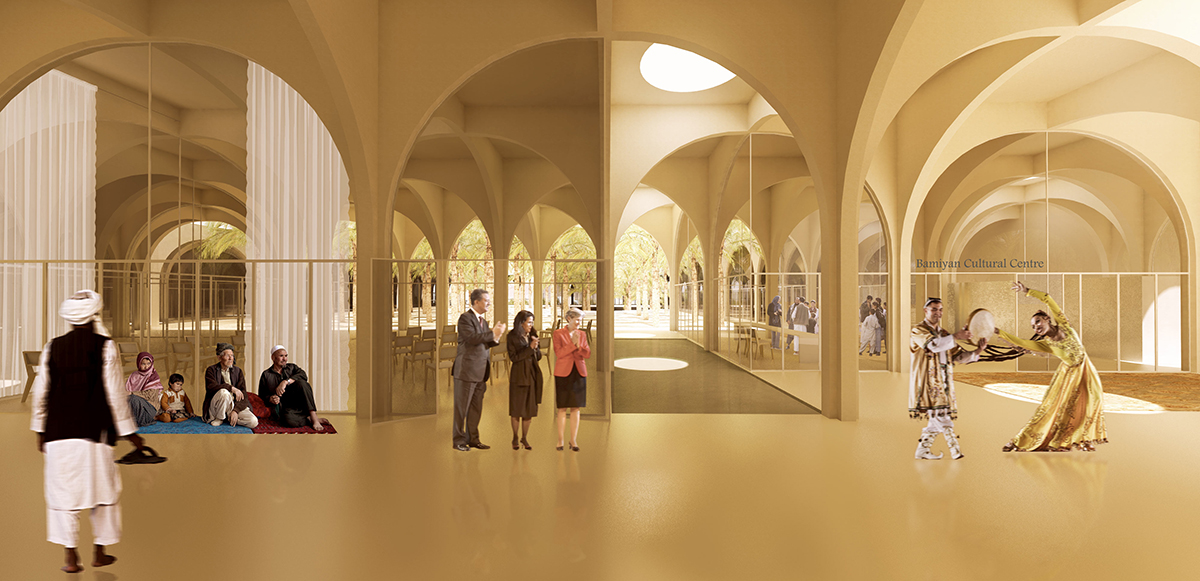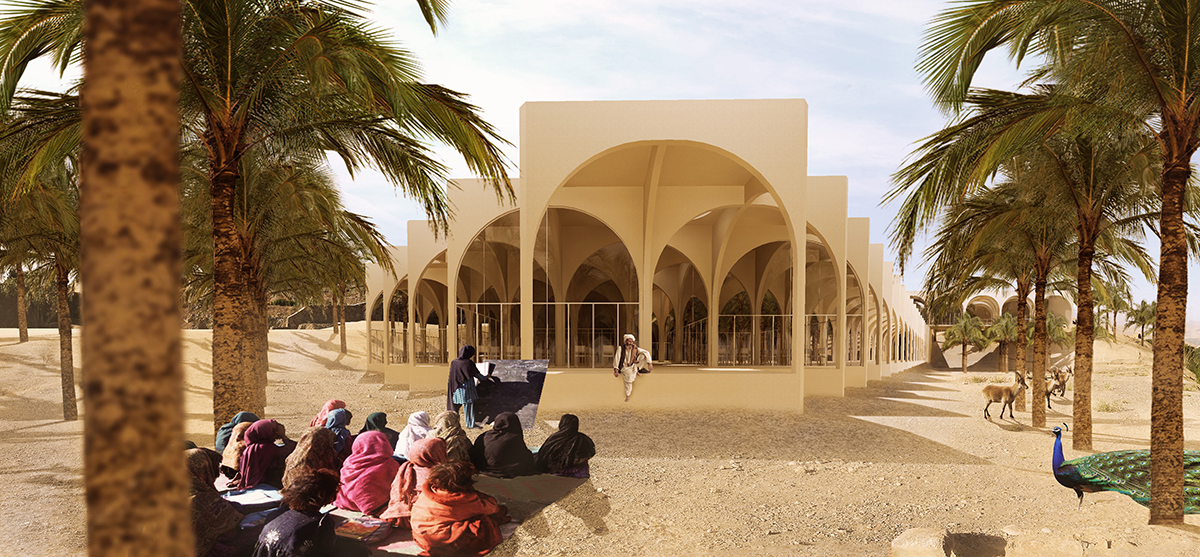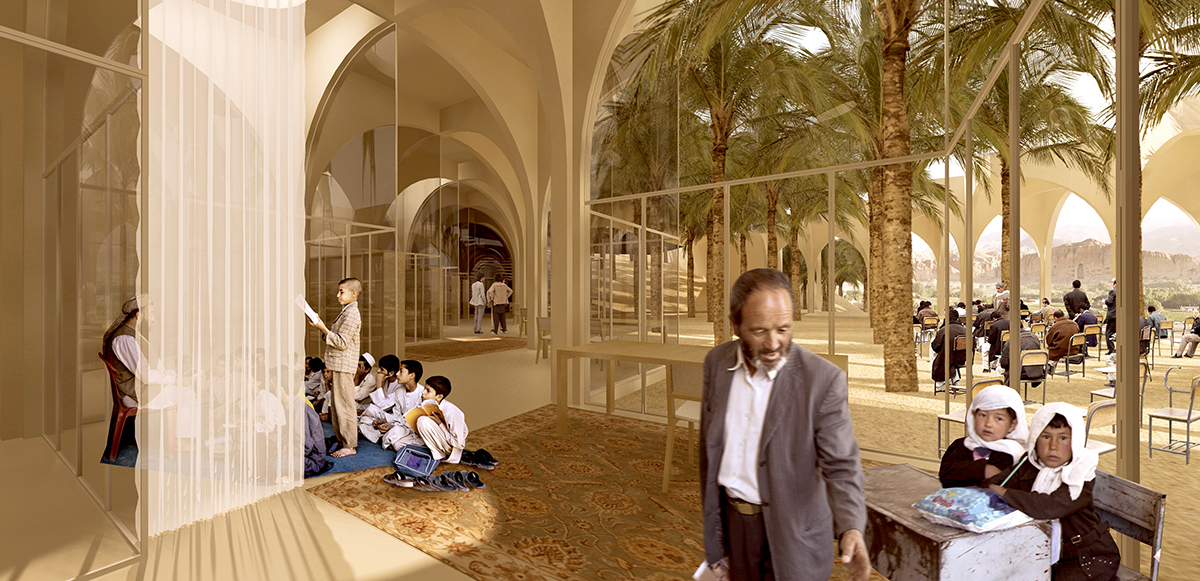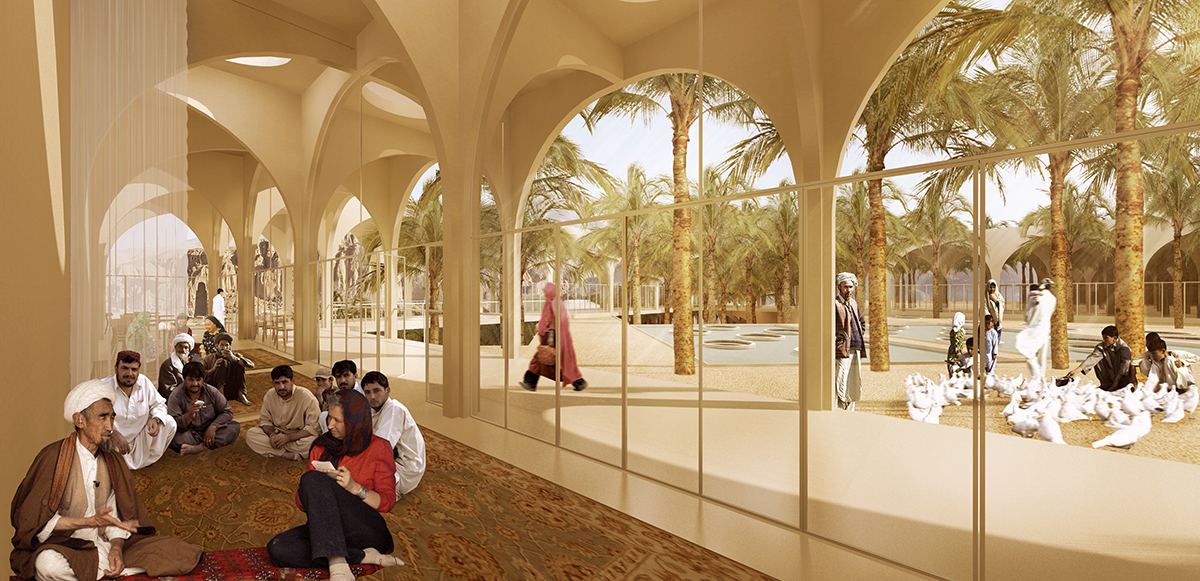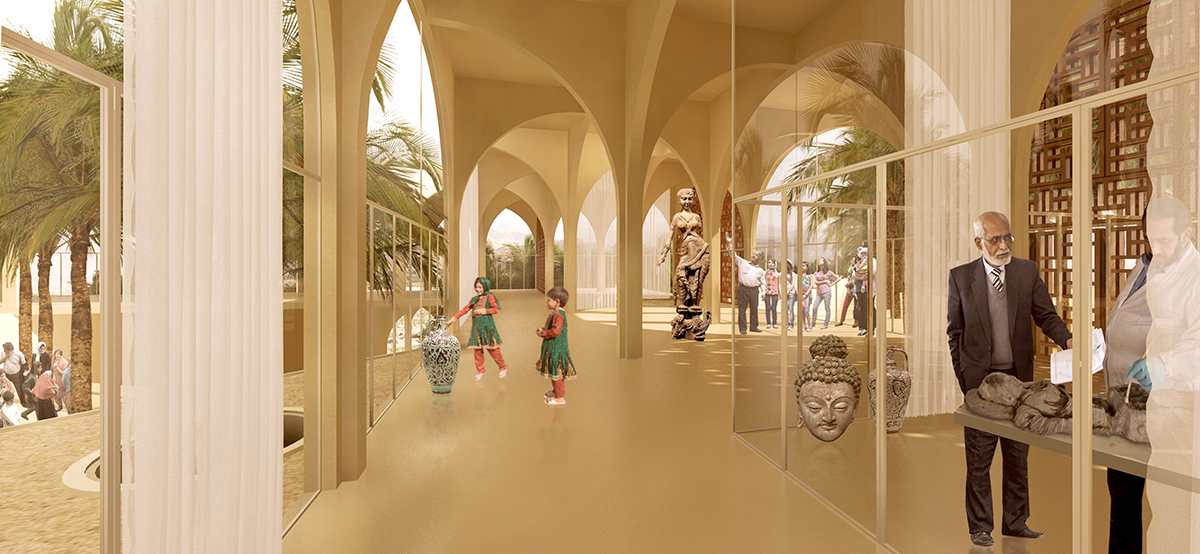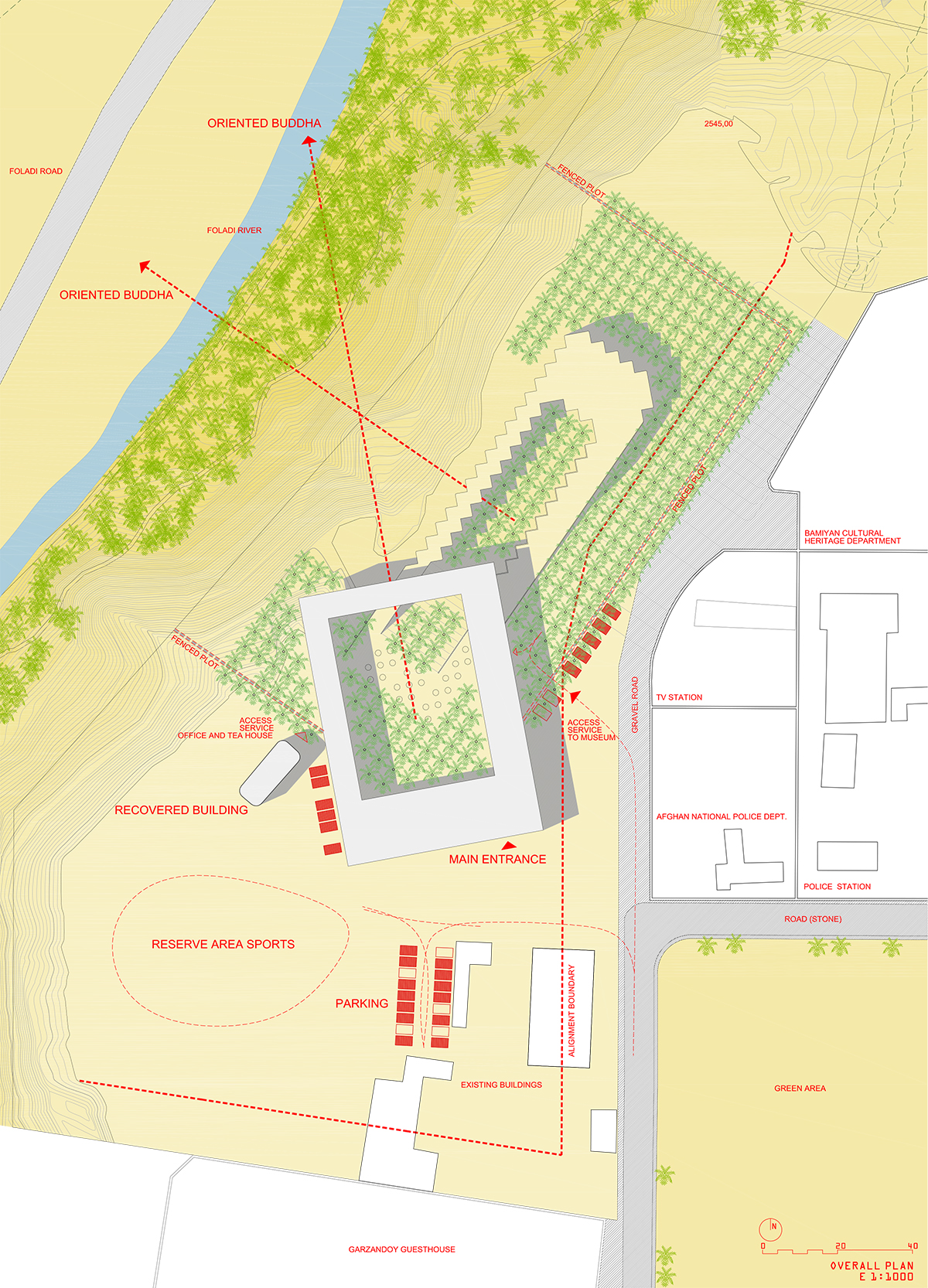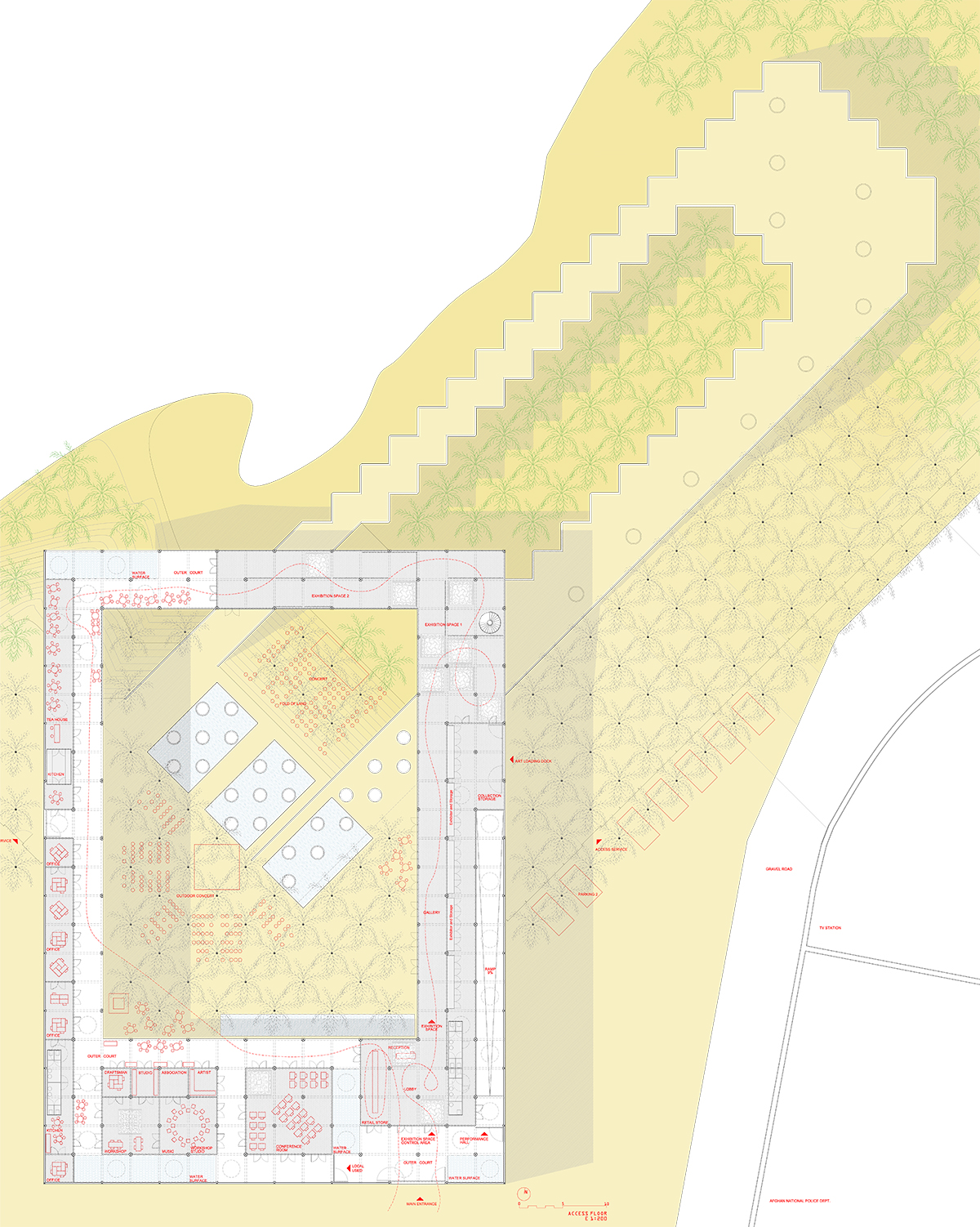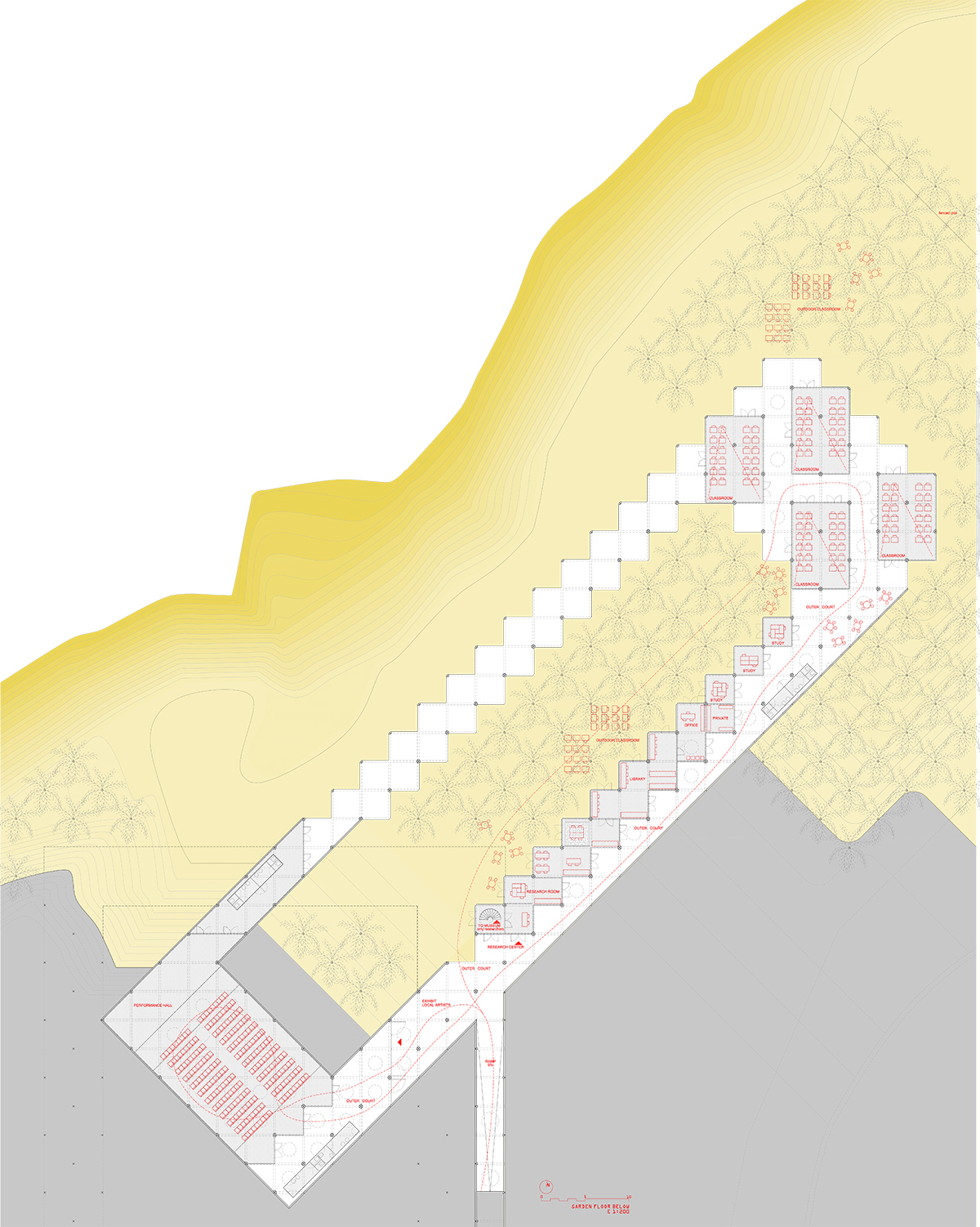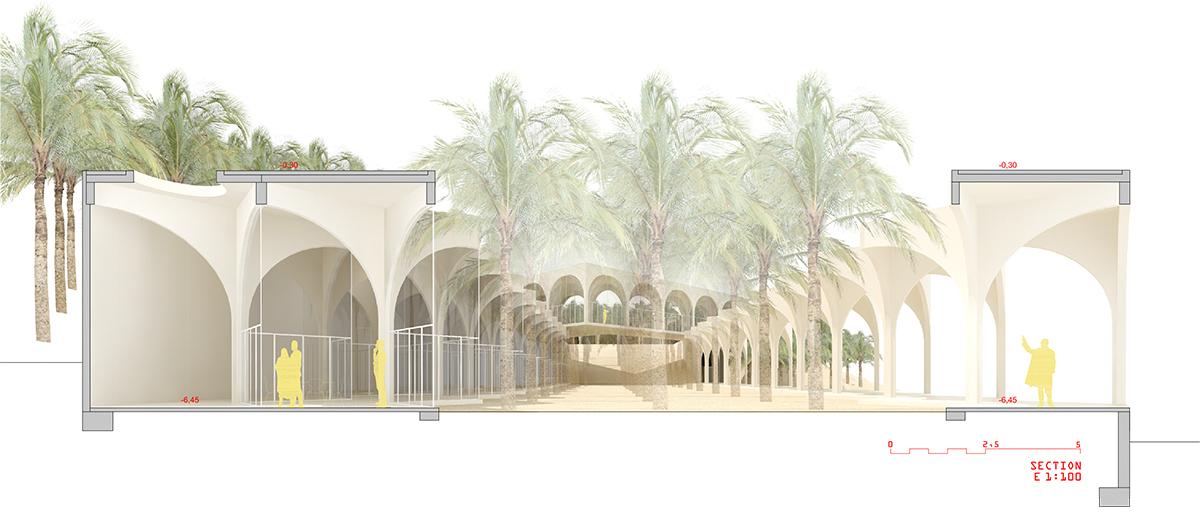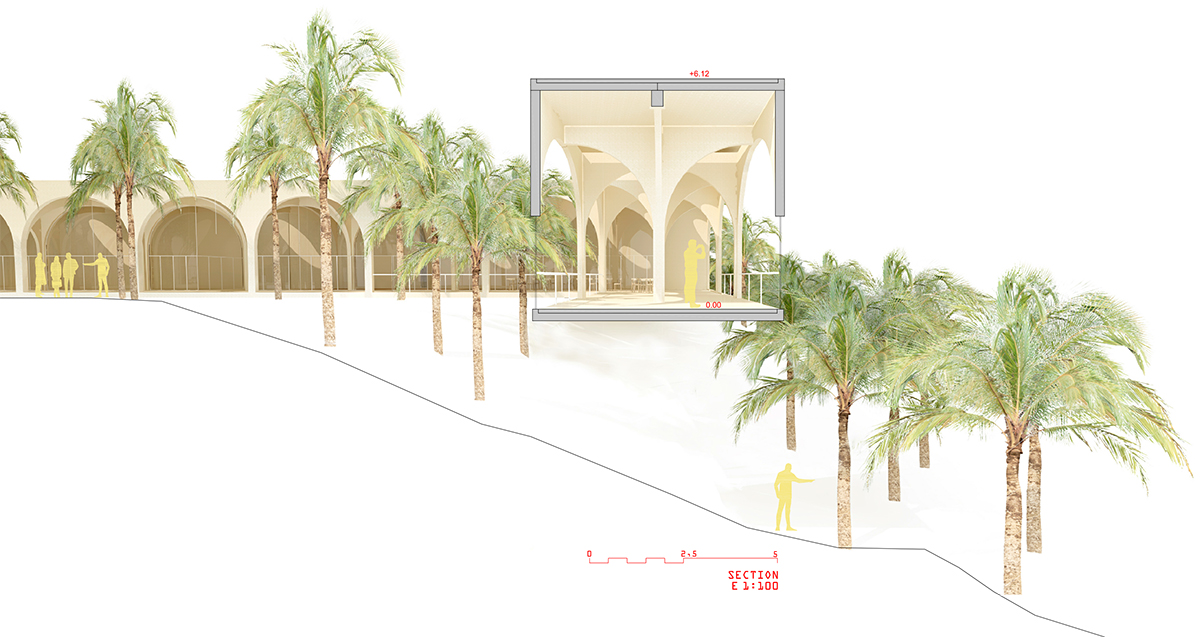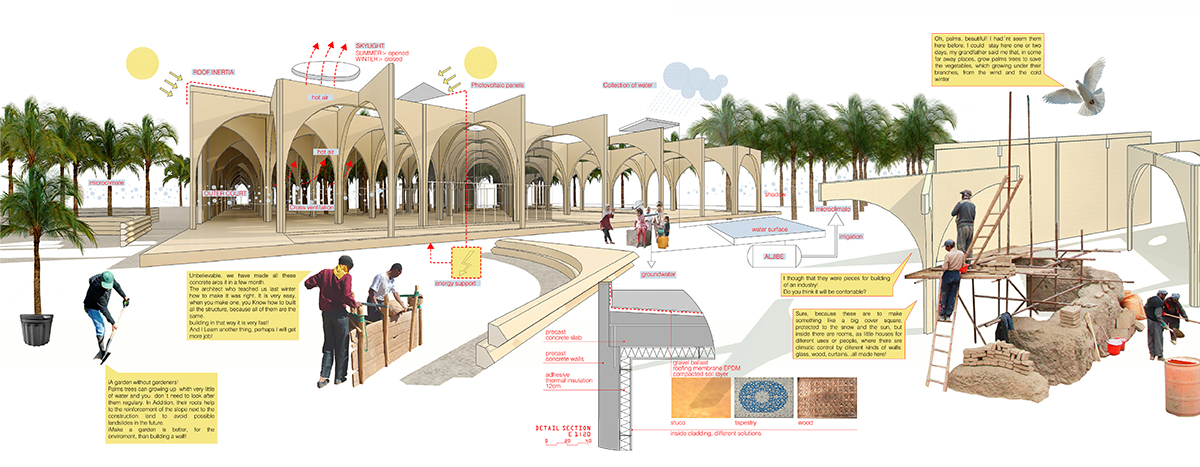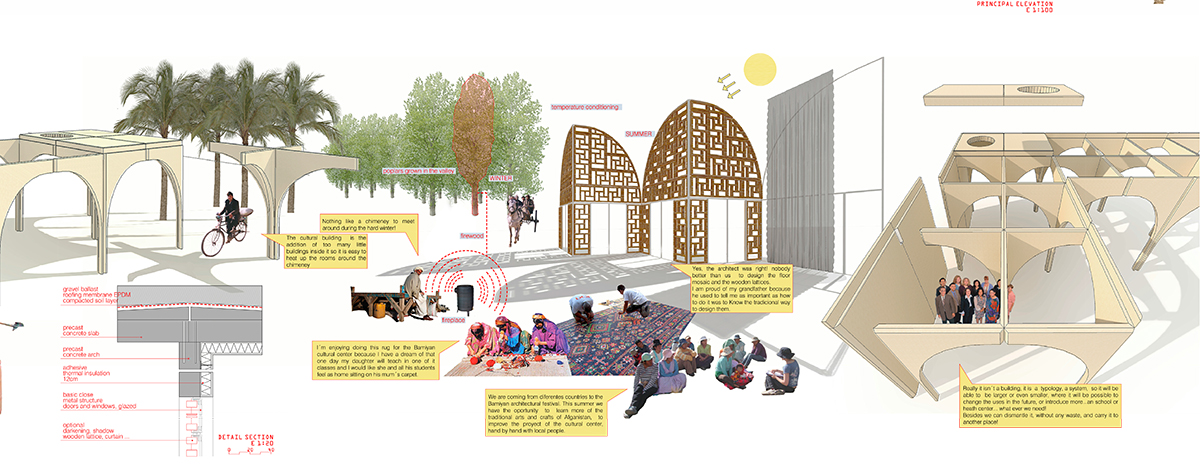1139-DJA-BIM.AF-2015
Clients: UNESCO, Ministry of Information and Culture of Afghanistan
Status: Competition (2015)
Location: Bamyan, Afghanistan
Climate: Desert / arid, Hot
Material: Undefined
Environment: Desert
Visualizer: JSalguero
Scale: 2.200 ㎡ Medium
Types: Cultural, Cultural center
A palm tree that grows in the middle of the desert does not make an oasis; it needs a relationship with many more things to contribute to the environmental changes, to make a part of the desert a livable place. The oasis symbolizes the idea of salvation of those who wander lost in the desert, from the mythical Garden of Eden where man felt at one with nature. Bamiyan Cultural Centre is conceptualized as a small oasis in this desert, which like Afghanistan, has become devastated by strife. Symbolized by the construction of a garden, a place that fosters the coexistence of many beautiful Afghan palm trees, capable of overcoming the tough winter, resilient individualities; ethnics, cultural, of diverse traditions, in search of a communion of identities of which arise the renewed Afghan idiosyncrasy.
An unusual Edén recreated by a palm grove of Afghan palm trees, Nannorrhops ritchiana. This endemic specie has traditionally grown in the country, but is now absent from the valley, will give rise to a discontinuity in the landscape singled out by the contrast with its surroundings. The new plantation will provide an opportunity for the regeneration of the ecosystem and, in particular will improve the environmental conditions of the garden to nuance the climatological conditions. To give shape to this meeting garden, as buildings in the valley do, the architecture surrounds and sets the boundaries to a part of the environment. To adapt to the topography two enclosures are placed in the two highest points of the whole plot, facing toward two huge Buddhas, as was the case with every landmark in Bamiyan, and justified by the double functional programme.
The upper closed volume, linked to the tradition of walled enclosures, ensuring the palm grove indoors, protected, more suitable for the urban landscape, from where the main access is made. The other one is fitted into the lower level distancing it from the urban landscape, and bringing it closer to the landscape, so the garden jumps outwards, dematerializing the perimeter of the building that is opened, thereby becoming more extroverted. This double status, open and closed, is also due to different functional qualifications of the programme uses. A duality that is diluted by folding both enclosures until they get connected, updating this traditional typology of strong horizontal hierarchy into a new relationship.
The geometry on which the garden is structured is configured from the crop pattern of the Afghan palm tree extended into a planting mesh. This vegetable lattice empowers a microclimate that enhances environmental conditions around the garden. Pools, placed both inside and outside the enclosures, act like a deposit collecting the water from the scarce rainfall, and promoting this microclimate. The presence of water also supports the symbolic recreation of the garden and fosters the formal attributes of architecture through the use of reflection as used mainly in the Islamic tradition.
The lattice is divided into two rectangular shifted patterns in order to conciliate the base frame with double orientation of the enclosures toward two huge Buddha and to structure the architecture. In this way, each enclosure is shown differently starting from the same frame, emphasizing again, the double open-closed condition of the enclosures. This geometric solution, reminds us of the plasterworks and mosaics systems of Islamic architecture. In the lattice of the enclosures, Architecture replaces the palm trees plantation by a porticoed system of arches, which resemble palm trees when bringing them near to each other.
This isotropic lattice of concrete palm trees, similar to the nomadic tents in the desert, where people lived ephemerally, enables a large covered space to grow acting as a light settlement with references to this tradition. Identity resources like the use of arches which references local constructions in which the huge Buddhas were built, remind us of religious buildings throughout history; mosques, monasteries, madrassas, agoras and cisterns. Bamiyan cultural center is a place like the aforementioned which will accommodate all ideologies and cultures. At the same time, it evokes a multifunctional system because these typologies have been often refurbished to have other uses from which they were designed which emphasizes its functional versatility.
This kind of enclosures, configured as large porticoed buildings, are occupied by multipurpose rooms both in shape as dimensions, which encourages the multiuse of the cultural center. A system that optimizes the conditioning of the building in order to manage independently each room, without giving up on an interior and exterior grading which reinforces the idea of garden. The Project submitted to the competition outlines this system of spatial organization rather than a final result, which could be adjusted if the programme of uses or requirements change. Its materialization is equally versatile, and can be solved with glass walls, concrete or wood latticework, implemented with textile items such as curtains and carpets produced locally.
The modulation of the porticoes constructively simplifies the building, as generated by repetition of an element – the arc base- which fosters its use in construction and can be prefabricated by optimizing the constructive process. The simplicity of the constructive system, both structural development and interior distribution, allows an easy manufacturing series that could promote a small local industry that would improve the integration of Bamiyan community during the buildings construction, which will provide a sense of identification in the population with the building itself.
